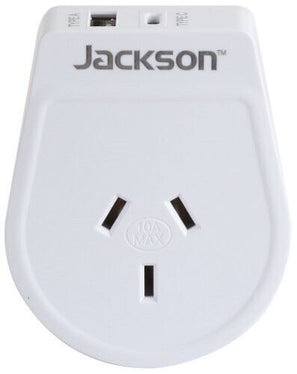Introduction
If you're a frequent traveler or someone who recently moved to Canada, understanding the AC plug standards can be quite crucial. Canada primarily uses Type A and Type B plugs, which are similar to those used in the United States. However, there are some nuances and specifics that you should be aware of to ensure your devices work safely and efficiently. In this article, we’ll explore everything you need to know about Canada AC plug standards, from technical specifications to practical tips for using adapters.

What is a Canada AC Plug?
Types of Plugs Used in Canada
Canada uses two main types of plugs: Type A and Type B. Type A plugs have two flat parallel pins, while Type B plugs have two flat parallel pins and a grounding pin. These types are standardized and widely used across the country.
Voltage and Frequency
The standard voltage in Canada is 120V, and the frequency is 60Hz. This is important to know because using devices designed for different voltages can be hazardous. Always check the voltage rating of your device before plugging it in.

Differences Between Canadian and US AC Plugs
Similarities
Since both Canada and the US use Type A and Type B plugs, many people assume there are no differences. While this is largely true, there are some minor distinctions in regulations and safety standards that can affect device compatibility.
Minor Distinctions
In Canada, all electrical devices and adapters must meet the Canadian Standards Association (CSA) certifications. This ensures that products meet safety and performance standards specific to Canada.
Using Canadian AC Plugs Internationally

How to Use Canadian AC Plugs in Europe
When traveling to Europe, you’ll need an adapter since European countries typically use Type C, E, or F plugs. These adapters convert the plug shape but do not convert voltage, so ensure your device can handle 220V-240V.
Client Anecdote: Adapting Abroad
Sarah, a frequent business traveler, shared her experience: "On my first trip to Europe, I forgot my adapter and couldn’t charge my laptop. Luckily, my hotel had a spare adapter. Now, I never travel without my universal adapter kit."

Adapters for Canadian Travelers
Investing in a good-quality universal travel adapter is a smart move. These adapters come with multiple plug types and can be used in almost any country. Look for adapters that also offer USB ports for added convenience.
Canada AC Plug Compatibility
Devices Compatible with Canada AC Plugs
Most modern electronic devices like laptops, smartphones, and cameras are compatible with Canada’s voltage and plug types. However, always check the power rating label on your device to confirm.
How to Identify Compatible Plugs and Outlets
Identifying compatible plugs and outlets is straightforward in Canada. Look for Type A and Type B outlets and ensure your device’s plug matches. If you have a device with a different plug type, use an adapter.
Tips for Using Canadian Devices Abroad
When using Canadian devices abroad, consider the following tips:
- Check Voltage: Ensure your device can handle the local voltage.
- Use a Quality Adapter: Invest in a reliable adapter to avoid electrical issues.
- Carry a Power Strip: A travel power strip with multiple outlets can be very useful.

What to Do if Your Device Isn’t Compatible
If your device isn’t compatible with Canadian plugs or voltage, you have a few options:
- Use a Voltage Converter: Converts the local voltage to match your device’s requirements.
- Buy Local Devices: For long-term stays, purchasing local devices can be more practical.
Purchasing and Using Adapters

Best Adapters for Canadian Plugs
Some of the best adapters for Canadian plugs include:
- Universal Travel Adapters: These cover multiple plug types and are versatile.
- Single Country Adapters: Designed for specific regions and often more reliable for single-country trips.
How to Choose the Right Adapter
Choosing the right adapter depends on your needs:
- Frequency of Travel: Frequent travelers should invest in a high-quality universal adapter.
- Specific Destination: If traveling to a single country, a region-specific adapter might be more reliable.
Reviews of Popular Travel Adapters
Here are some top-rated travel adapters:
- BESTEK Universal Travel Adapter: Known for its versatility and built-in surge protection.
- Ceptics World Travel Adapter Kit: Compact and includes plug types for over 150 countries.
- EPICKA Universal Travel Adapter: Features multiple USB ports and supports fast charging.

Adapter Safety Tips
When using adapters, keep the following safety tips in mind:
- Avoid Overloading: Don’t plug too many devices into one adapter.
- Check Compatibility: Ensure the adapter matches your device’s plug type and voltage.
- Inspect Regularly: Check for any damage or wear and replace adapters as needed.
Technical Aspects and Safety

Understanding Electrical Ratings
Understanding electrical ratings is crucial for safe usage. Electrical ratings include voltage, current (amperes), and power (watts). Ensure your device’s ratings match those of the outlet and adapter.
Safety Tips for Using AC Plugs
Here are some safety tips for using AC plugs:
- Inspect Plugs and Cords: Regularly check for damage and replace if necessary.
- Avoid Wet Conditions: Never use electrical devices in wet or damp conditions.
- Don’t Overload Outlets: Plugging too many devices into one outlet can cause overheating and fires.
Common Issues and Solutions
Some common issues with AC plugs include:
- Loose Connections: Ensure plugs fit securely in outlets.
- Power Surges: Use surge protectors to safeguard your devices.
- Faulty Adapters: Replace adapters that show signs of wear or malfunction.
How to Avoid Electrical Hazards
To avoid electrical hazards:
- Use Certified Devices: Always use devices that meet local safety standards.
- Follow Manufacturer Instructions: Adhere to the manufacturer’s guidelines for device usage.
- Educate Yourself: Stay informed about electrical safety practices.
Home and Office Applications
Setting Up Home Electronics
When setting up home electronics:
- Plan Your Outlets: Ensure you have enough outlets for all devices.
- Use Surge Protectors: Protect sensitive electronics from power surges.
- Organize Cables: Keep cables tidy and avoid tripping hazards.
Office Equipment and AC Plug Compatibility
For office equipment:
- Check Compatibility: Ensure all devices are compatible with Canadian plugs and voltage.
- Use Power Strips: Power strips with surge protection can be very useful in office settings.
- Label Cables: Labeling cables can help keep things organized and reduce confusion.

Energy Efficiency Tips
To improve energy efficiency:
- Unplug Devices: Unplug devices when not in use to save energy.
- Use Smart Plugs: Smart plugs can help monitor and control energy usage.
- Choose Energy-Efficient Devices: Look for devices with energy-saving features.
Smart Home Integration
For smart home integration:
- Use Compatible Plugs: Ensure all smart home devices are compatible with Canadian plugs.
- Centralize Control: Use a central hub to manage all smart devices.
- Automate Tasks: Automate tasks like turning off lights and adjusting thermostats to save energy.
Regulatory and Compliance Information
Canadian Electrical Code for AC Plugs
The Canadian Electrical Code (CEC) sets standards for electrical installations and devices. Ensure all devices and installations comply with CEC to avoid safety hazards.
Certification and Safety Marks
Look for the following safety marks on devices and adapters:
- CSA (Canadian Standards Association)
- UL (Underwriters Laboratories)
- ETL (Intertek) These marks indicate that the product meets safety and performance standards.
Environmental Regulations
Canada has strict environmental regulations for electrical devices to reduce energy consumption and environmental impact. Look for energy-efficient devices with certifications like ENERGY STAR.
Compliance for Imported Electrical Goods
When importing electrical goods:
- Check Certifications: Ensure products meet Canadian safety standards.
- Verify Voltage and Plug Type: Make sure the products are compatible with Canadian voltage and plug types.
- Consult Regulations: Familiarize yourself with import regulations to avoid issues.
Conclusion
Understanding Canada AC plug standards is essential for safe and efficient use of electrical devices. Whether you’re setting up electronics at home, traveling abroad, or importing electrical goods, following these guidelines will help you avoid common pitfalls and ensure a smooth experience. Always prioritize safety, check compatibility, and invest in quality adapters to make your electrical experience seamless and hassle-free.

